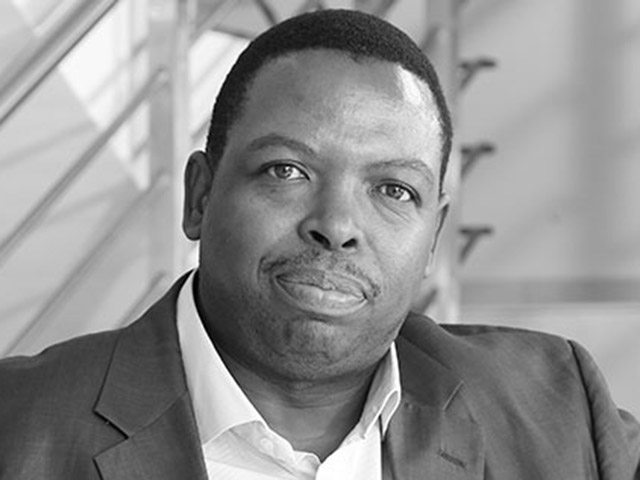While there has been much talk about smart cities, one of the most cogent discussions of the benefits, challenges and complexity associated with smart cities has come from EMC and IDC at a recent round table event in Sandton. The companies jointly discussed the prospects around data driven smart cities in South Africa, as well as scenarios where smart cities are already working elsewhere in the world.
Jonas Bogoshi, the country manager for EMC South Africa, began by explaining why the focus on smart cities now. He pointed out that cities are not just fundamental to economic growth but also critical to social development, and, when managed well, spur on innovation and encourage entrepreneurship. Additionally, Bogoshi elaborated that by 2020, we can expect to see 30 billion connected devices, more than one million new businesses, and seven billion people.
Many of the latter are expected to be digital citizens, and likely to expect cities that cater to an always on, always connected lifestyle that delivers information at their fingertips. All of this depends on strong underlying IT infrastructure (where EMC comes into the equation) and well thought-out cities that can respond to the needs of its citizens.

Jonos Bogoshi, country manager for EMC South Africa
Looking ahead
In short, cities that want to attract talent and entrepreneurship in the future need to be smart in order to enjoy the knock on effect of the growth of new businesses and all the benefits that come with a strong economy.
Furthermore, Mark Walker, the Head of Africa IDC for the Middle East, Turkey and Africa noted that urbanisation is driving the need for smart cities, particular as 80% of the South African population is expected to reside in one of the country’ cities by 2050. This begs questions of how resources can best be managed, along with the imperative of dealing with the impact of pollution that result from high population density. Indeed, just looking at China and its problems with smog bear witness to how out of hand pollution in a densely populated city can become.
However, what also became apparent is that the formulation of smart cities is not a simple venture by any means. Walker explained that IDC’s definition of a smart city is that of a finite entity (district, town, city, county, municipal, and/or metropolitan area) with its own governing authority that is more local than national. This entity is built on an ICT foundation layer that allows for efficient city management, economic development, sustainability, innovation and citizen engagement.
Not built in a day
Additionally, the formation of a smart city is not a once off goal that is quickly reached. Rather, the IDC identifies five stages of its formation, with stage one, dubbed the Ad Hoc stage, being characterised by technology enabled pilot projects, usually to address a particular need, and which have measurable, concrete results, and is limited in its scope and area.
A few examples of this in South Africa include the deployment of smart meters, the rollout of fibre optic cable and public WiFi-deployments, with Johannesburg, Pretoria and Cape Town all having their own initiatives for the latter. And yes, Walker confirmed, that does mean that South Africa is, “somewhere between stage one and stage two of the formation of a smart cities.
Stage 2, dubbed the opportunistic stage, begins to realise projects that have a broader vision and tend to take a broader view than just addressing a small sliver of service delivery, with smart initiatives pertaining to traffic management given as one example.
Stage 3 entail more mature visions about what stakeholders want the city to become in the long term, with a focus on governance and bringing repeatable results.
Pinnacle of achievement
The fourth stage and the fifth stage, called ‘managed’ and ‘optimised’ respectively, are where a smart city really reaches maturity. The example given of a city that has attained the fourth stage (the furthest achieved as yet) was Singapore. It is during these stages that a city reaches the ultimate goal of a smart city, in which continuous improvements in service delivery not only improves the lives of its citizens but also brings a competitive advantage to the city as a whole.
Walker explained that building a smart city doesn’t happen overnight, but rather can take anywhere from 10-15 years to reach stage five.
The good news is that is seems like the jump from stage one to stage two takes the longest time, between three to five years. This suggests that overcoming inertia with regards to beginning making the move to smart cities is the primary hurdle, with progression becoming swifter through to the next stages.
All together now
Walker stressed that smart cities cannot be fully achieved by governments alone. He noted that there are in fact several stakeholders, including the public sector, planners and developers, private companies and investors, utilities as well as ICT and infrastructure suppliers. Last but not least, are citizens themselves. “What really counts here are the citizens – if a smart city implementation isn’t geared towards delivering the services they require, then any implementation is just a waste of money,” he warned.
The problem, especially with the variety of stakeholders involved, is coordinating each together. Walker noted that the fact that there are a number of players, each with entrenched interests, only complicates matters, and it also means that strong leadership is required across the board, from public, private and commercial sides. Furthermore, another roadblock is financing itself, as attaining a smart, or even just smarter, city is not an opportunity that is realised on the cheap. This leaves governments with tough choices that need to be made, particularly when economic growth and budgets are constrained.
And yet, making progress on building a smart city seemed a good, maybe essential, way to ensure the economic viability of a particular city for the future.
The IT nitty gritty
Indeed, Bogoshi pointed out that the overall promise of a smart city is certainly worth the effort. He elaborated that digital transformation is not simply a buzzword, but rather a real potential, that can fundamentally change how people work and live. He continued that this vision of a digital society entails highly engaged citizens who interact with the city in real time, and enjoy good, clean living, while being able to work, live and learn online.
The picture painted was that of a truly 21st century city, not characterised necessarily by flying cars and outlandish technologies but by cities which elevate all their stakeholders (business’ as well as citizens) standard of working and living.
Bogoshi elaborated that in order to move this lofty ideal into attainable reality, there are certain requirements from an IT perspective that he believes smart cities need to have in place.
The first of these is infrastructure that is robust, scalable, secure and agile. “We believe we are uniquely positioned as an organisation. Taking into account our merger with Dell, our vision as a combined organisation is to build the IT infrastructure of the world for the next twenty years. We thus bring an open infrastructure, which means users aren’t tied down to one supplier,” he enthused.
Secondly, he continued that smart cities should be based on IT that is software defined, which is the cheapest way of building a highly scalable infrastructure. Thirdly, smart cities need to be based on converged infrastructure (in part due to being considerably cheaper) and lastly, smart cities need to be driven by data.
Setting the stage
“These are the things we can provide, and we can do so based on a number of companies that we have acquired. For example, in our portfolio includes VCE, which deals with converged infrastructure, Virtustream, a cloud provider for mission critical records and VMware which offers the software defined datacenter,” he noted.
Additionally, Bogoshi stressed that the IT of a smart city must have three layers – an infrastructure layer which is based on modern data centre concept, the data layer, which is characterised by a data lake, or source where you can ingest data, analyse it and manage it, making it available to whoever may require it, and lastly the application layer which is where the data that is provided is consumed or used.
EMC’s recommendations for smart cities
Bearing in mind Walker’s earlier point that a prime hurdle to smart city implementation remains cost, Bogoshi noted that he believes that what works for business in this regard can similarly do so for cities. “If cities implemented a modern data centre, they could save about 25% of the operating cost. On this path, cities could also benefit from real time value, while agility would enables it to adapt to any requirement that may arise,” he elaborated.
EMC’s top three recommendations, according to Bogashi, include firstly that they are instrumented, meaning that they are able to gather data from as many parts of the city as possible, with just two example given including information pertaining to traffic and the crime rate at any given time.
Secondly, he urged that this needs to be interconnected, such that a city is able to take the data gathered, analyse it and able to react in real or near real time. Lastly, smart cities must be able to take that information, and the insight gleaned from it, and then be able to share it with citizens and developers so that they can use it appropriately.
Final thoughts
As with so many discussion on weighty topics such as smart cities, the lingering question is where to from here? While discussion is essential, so too action. Hearteningly, EMC appears to have a plan to participate in driving smart city development further. “We intend to take the findings that we have learnt in conjunction with IDC, share them with cities across South Africa, engage them and try to find some with which we can move from stage one to stage two,” he added.
While smart cities are still discussed and touted, what became apparent from IDC and EMC is that these are not a futuristic pipe dream, but rather an essential investment in the future of a city and its people. “All we need to do is to move to from stage one to stage two to build the momentum to go onwards to the next stages of what a smart city can deliver,” concluded Bogashi.





